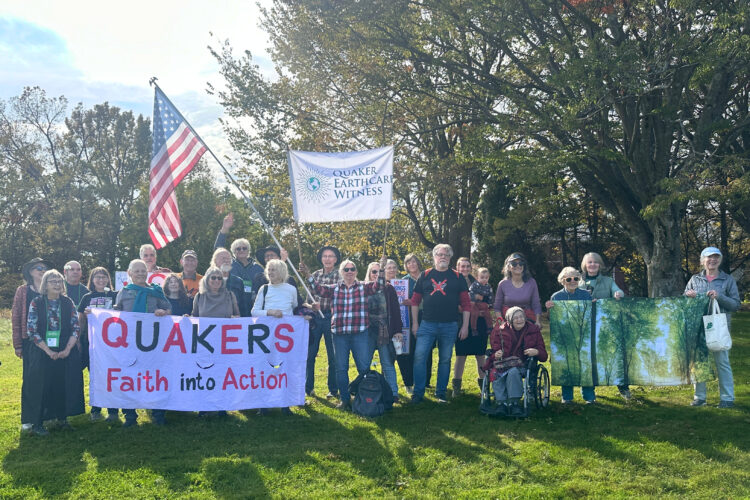Bringing Light to the Dark: Environmental Violence

By Brad Stocker, Miami Friends Meeting.
ONE OF THE MORE POIGNANT things to have affected my earthcare work was 2016’s QEW table and display, which had a darker element than in the past as it focused attention on those who have been killed for their involvement in environmental justice. We created a display for bringing light to this very dark side of Earthcare. The display held data and resources and was a small memorial to some of those who had been killed. It was not intended to list everyone as those who were there were representative of the others. It was a quiet witness. It came to be thus…
Just prior to the April Gathering, news of the assassination of Berta Cáceres, a Honduran environmental activist, had hit the news. Many of us who have been involved in earthcare and justice work knew that while she was current news, she was not alone. In fact, she was not alone in Honduras where 14 others had been killed for doing much the same work in 2016. It was perhaps the timing or that she’d been given awards for her work that gave rise to the visibility of her murder, which included being mentioned by President Obama. Nevertheless, she was the stimulus for the research that went into the QEW display.
In the United States, we often forget that when we are called to the streets, write a letter of protest, boycott, give up some aspect of our lifestyle, there are those in other parts of the world where a demonstration is life-threatening, where a protest can cause assassins to enter your home. We in the privileged North, with consumption far in excess of our needs, with our huge draw on earth’s resources, with our luxury, and expectation of a good life, too often lose sight of the daily sacrifice life in other contexts requires. We, therefore, forget that the struggle of many in the Global South to move against the forces that would take their rights, land, and resources is far more threatening than what we face here. So, we thought that a humble bow to the work and sacrifices of those who have lost their lives would be worthwhile. We felt that shining light on that darkness is appropriate. Please take a bit of time to look up some of the names, to look into the research linked here and hold them in the Light.
SOURCE: Deadly Environment. Global Witness. April 14, 2014.
Additional Deadly Environment Facts:
- Between 2002 and 2013, 908 people in 35 countries are known to have been killed because of their work on environmental and land issues.
- Brazil is the most dangerous place to be defending rights to land and the environment, with 448 cases, followed by Honduras (109) and the Philippines (67).
- 2012 was the bloodiest year yet, with 147 deaths recorded.
- Three times as many people were killed in 2012 than 10 years previously, with the rate doubling to an average of two people a week in the past four years.
- Only 10 perpetrators are know to have been tried, convicted and punished between 2002 and 2013 – around one per cent of the overall incidence of known killings.

